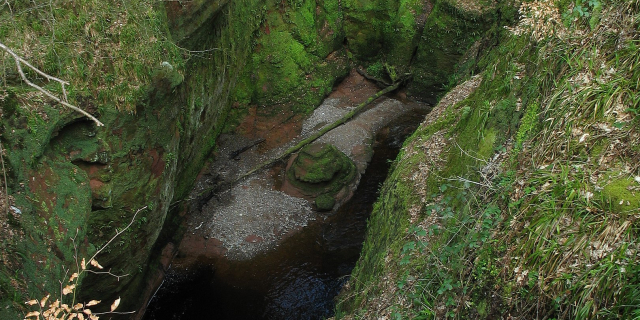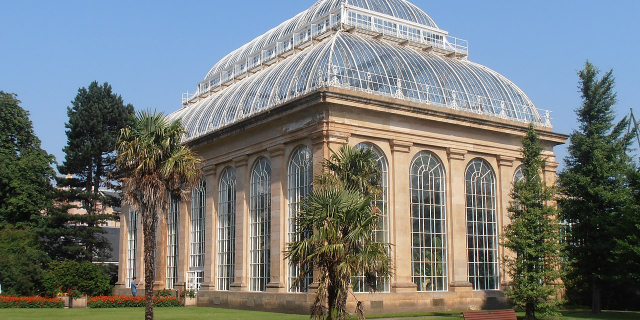The Fossil Grove is a group of plant fossils located within Victoria Park, Glasgow, Scotland. It was discovered in 1887 and contains the fossilised stumps and the stigmarian system of eleven extinct Lepidodendron lycopsids, which are sometimes described as "giant club mosses" but are more closely related to quillworts. The Fossil Grove is managed as a museum and has been a popular tourist attraction since it opened for public viewing in 1890.
The site, Glasgow's most ancient visitor attraction and the remnants of an extensive ancient forest, is viewed from within a building constructed to protect the fossils from the elements.
In 1885 part of the Scotstoun estate was leased to create a park, and the Fossil Grove was discovered in late 1887 when a pilot channel was cut through an old quarry in preparation for the construction of a road in the park.[1] In April 1888 members of the Geological Society of Glasgow suggested to leave the fossils in situ and construct a building around the fossils. The commissioners of Partick elected to leave the fossils where they were uncovered and in 1889, at a cost of about £400, constructed a building to contain the fossils. On 1 January 1890, the Fossil House covering the Fossil Grove opened to the public. The wooden roof timbers of the House were replaced with metal trusses in the 1920s. A bomb damaged the roof and a single trunk during World War II, and a concrete spacer replaced the center of the damaged trunk. The windowed roof was replaced with regular roof panels in the 1970s. Today the building continues to be maintained by Glasgow City Council. The Fossil Grove Trust (along with Historic Scotland) are working with the Council to improve the drainage, ventilation, and interpretation of the site. Friends of Victoria Park are establishing a fernery in the adjacent quarry area. The fossil lycopsids are designated as a Site of Special Scientific Interest.[1][2]





































Add new comment